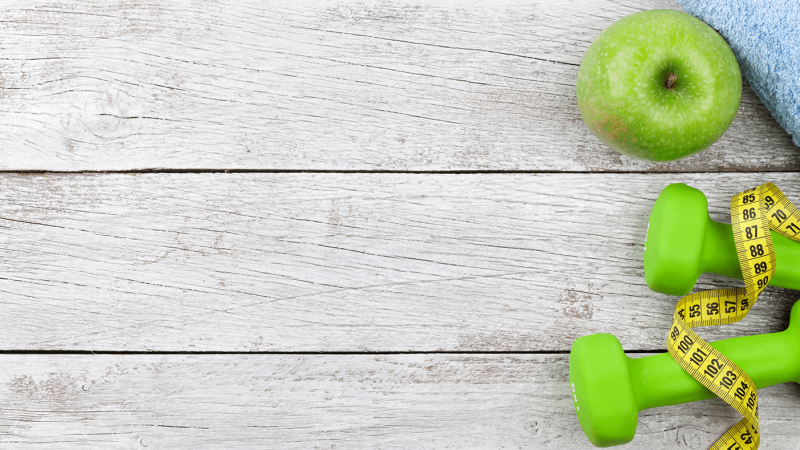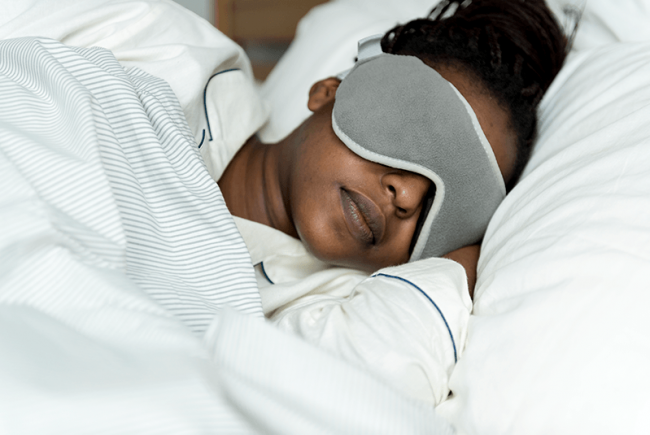Healthy Tips
Click on the + to the right of each topic to view the full article.
Don’t Drink Your Calories!
Did you know sugar-sweetened beverages are the leading sources of added sugars in American diets?
Sugary drinks are strongly associated with weight gain/obesity, type 2 diabetes, heart disease, and many other health problems. Reach for a refreshing glass of water instead and enjoy all the benefits:
- Energize your muscles
- Boost your metabolism
- Act as an appetite suppressant
- Keep your skin looking good
- Flush harmful toxins out of your system
- Lubricate your joints
- Help maintain optimal blood pressure levels
Find Time and Get Fit!
Set a goal for 30 minutes of moderate intensity exercise at least 5 days a week. Did you know breaking it into two 15-minute or three 10-minute sessions gives you the same benefits? Little bits of exercise throughout the day can add up – get creative!
- Start the day with a brisk 10 minute walk.
- Take the stairs whenever you can.
- Ditch the drive - walk where you’re going.
- Take a stroll while making your phone calls.
- Schedule a work and walk meeting with a coworker.
- Pick the furthest parking spot.
Get Moving. Get in Motion.
Daily movement and moderate exercise keeps our minds focused and our bodies happy. Whether it’s walking, running, yoga or taking the dog for a walk, it can be activities we enjoy. Daily movement releases chemicals in your brain, such as serotonin and endorphins, which can help improve your mood, reduce the risk of depression, and cognitive decline. The CDC recommends adults participate in at least 150 minutes a week of cumulative moderate to vigorous physical activity. Challenge yourself to move for a few minutes a day and create a healthy new habit; if not a 30-minute workout, break up workouts into multiple 10-15 minute sessions. Grab a friend, coworker or family member and have some fun!
Benefits of Moving
- Stress and anxiety relief
- Immune support
- Weight management
- Reduces health risks and prevents diseases
- Improves bone and muscle strength
- Increases balance and flexibility
Steps to Get Moving
- Determine your strengths and weaknesses
- Improving core strength
- Aerobic capacity and endurance
- Flexibility, mobility, and stability
- Balance and coordination
- Establish your wellness initiatives
- Set daily and weekly goals
- Assign a block of time for each task throughout your day
- Start moving and feeling well
Eat Right. Feel Right.
As everyone looks to find ways to cope with the pandemic and the “new normal", it’s important to recognize that worry, stress, anxiety come naturally and can lead us to abandon our healthy eating intentions. We’ve learned the art of social distancing, so now it’s time to work on distancing ourselves from eating unhealthy foods. With just a little thought and planning, we can continue to make healthy choices, which make our bodies feel better, improve our mood, lower stress and keep our immune system in top condition.
Here are some steps we can take to eat healthy.
- Make a daily meal plan for the week.
- Shop with a grocery list that supports your plan.
- Load up on fruits, vegetables, whole grains, healthy fats and lean proteins.
- Avoid high-fat, high-sugar snacks: stock up on healthier options like nuts, cheese, yogurt, chopped or dried fruits, boiled eggs, fresh vegetables.
- Limit highly processed foods, which are high in saturated fat, sugars and salt.
- Manage your choices; if it’s not in the pantry, then you can’t eat it.
- Drink lots of water. If you think you’re hungry, then you might be thirsty.
- Control portion sizes.
- Plan and enjoy comfort foods in moderation.
- Stay on a scheduled eating pattern.
- Explore new recipes and make cooking fun!
Time for a Heart to Heart.
Traditionally the month of February is a time for red hearts, fragrant roses, decadent chocolates and showing our loved ones how much we care. What better way to celebrate our loved ones than to have a “Heart to Heart about Heart Health." Several health conditions, our lifestyles, age and family history can all increase our risk for heart disease. About half of all Americans (47%) have at least 1 of 3 key risk factors for heart disease: high blood pressure, high cholesterol and smoking.
Grab a coworker, friend, neighbor or family member and get started. Research shows that we’re more successful at meeting personal health goals when we join forces with others. Together learn your risk factors, know your numbers, set your goals and keep a log of your activity. Most importantly, stay on track by encouraging and keeping each other accountable.
To help prevent heart disease, remember to follow these tips:
- Eat healthy.
- Get active.
- Stay at a healthy weight.
- Quit smoking and stay away from secondhand smoke.
- Control your cholesterol and blood pressure.
- Drink alcohol only in moderation.
- Manage stress.
Stop the Stress!
Living a day with some stress does have its advantages. Stress can help us meet daily challenges, motivate us to reach goals and accomplish tasks more efficiently. The fight-or-flight response stress has on the brain floods the body with chemicals like epinephrine, norepinephrine and cortisol. It can boost our memory, as well as our immune system. However living a life with too much stress can wear us down, make us sick both physically and mentally. Explore different strategies to learn how to cope with stress on a daily basis. Determine which steps work best for you, and take control of stress in your life.
Here are some steps.
- Keep a Stress Diary. Recognize what causes stress and how you react.
- Identify your thoughts about the stress factors in your life.
- Reduce the demands on your time and learn to say no.
- Spend more time with people who energize you and less time with those who drain you.
- Break down tasks into steps and celebrate checking each off your list.
- Save some time for yourself every day.
- Redirect your stress to exercise; it’s a form of controlled stress on the body and burns those stress hormones.
- Laugh. It releases endorphins and helps decrease those harmful stress hormones.
- Practice deep breathing and relaxation throughout the day.
- Relaxation techniques relieve tension by relaxing muscles. Try daily meditation, yoga, biofeedback, or practice this visual imagery exercise:
- Find a quiet comfortable place where you won’t be disturbed.
- Close your eyes and travel in your mind to a place that is beautiful and peaceful.
- What do you hear?
- What do you feel?
- What do you see?
- What do you smell?
- Continue relaxing for a few minutes. Let go of the images. Stretch. Open your eyes.
A Word About Hyperbaric Oxygen Therapy
 Hyperbaric Oxygen Therapy (HBOT) is a safe and proven way to help the body heal from the inside out. At Springhill Medical Center, our hyperbaric program offers patients a powerful tool for recovery, using 100 percent oxygen in a pressurized chamber to speed healing and fight infection.
Hyperbaric Oxygen Therapy (HBOT) is a safe and proven way to help the body heal from the inside out. At Springhill Medical Center, our hyperbaric program offers patients a powerful tool for recovery, using 100 percent oxygen in a pressurized chamber to speed healing and fight infection.
This kind of treatment helps oxygen reach deep into injured or damaged tissue, where blood flow might be limited. It’s been shown to help patients heal from chronic wounds and other tough conditions that don’t always respond to standard treatment.
So, what can hyperbarics treat?
• Decompression Sickness (The Bends)
• Chronic non-healing wounds (including diabetic foot ulcers)
• Radiation tissue damage (after cancer treatment)
• Skin grafts and flaps that are at risk
• Certain bone and tissue infections
• Crush injuries and sudden hearing loss
• Carbon monoxide poisoning
Did You Know?
HBOT also can help patients recover from complex oral surgeries — especially those involving bone grafts or dental implants where healing can be delayed. By improving oxygen delivery and reducing swelling, HBOT can enhance recovery and reduce the risk of infection, particularly in patients with prior radiation treatments to the head and neck.
SMC's Wound Care and Hyperbaric Oxygen Program: 251.460.5461





